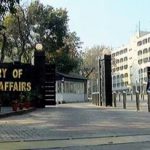MULTAN, Feb 10 (APP):Punjab archaeology department has asked Lahore Walled City Authority (LWCA) to stop applying sandblasting technique on monuments in Multan to avoid hurting the health of the historical structures.
Deputy director (South) Punjab archaeology department, Muhammad Hassan, when contacted told APP that the technique being used by LWCA contractor involved pressure spray of sand on the surface of monument for its cleaning and would expose the inner surface of monuments and leave pores in bricks uncovered to face weather intensity and pollution.

He said the archaeology department has asked LWCA officials telephonically to stop applying this technique and consult archaeology and conservation experts to know about its benefits or risks before applying it again.
Incharge archaeology department Multan SDO Ghulam Muhammad said he has informed the high ups by a letter that LWCA was applying the sandblasting technique also called corrosive cleaning on the monuments including over a century old clock tower building, and centuries old mausoleums of Hazrat Bahauddin Zakariya Multani and Hazrat Shah Rukn-e-Alam, the one that had won the prestigious Agha Khan Award for its best conservation.
He also shared the photographs of the parts of monuments whose walls suffered damage due to sandblasting showing bricks whose fragments were chipped away due to pressure of sand throw.
A citizen namely Haidar Ali Bukhari said, a search on google with key words ‘sandblasting on monuments’ would deliver many online pages containing opinions of experts advising against employing sandblasting technique on monuments and the risks involved.

“This technique was banned in the western countries around 100 years back,” said Dr. Muhammad Hameed, the chairman department of archaeology, Punjab University Lahore.
Talking to APP, Dr. Hameed, who did his Ph.D from Free University in Berlin, Germany, said that sandblasting removes the protective layer the monument develops over the years and exposes weaker surface that is porous and allows penetration of rain water and pollution thus risks the strength of the historical structures.
It may be allowed for cleaning wooden, metal or stone surface but not recommended on bricks structures of monuments, he said.
He said that he had talked to the LWCA officials after he came to know about the technique being used on Multan monuments and they had stated that they would consult experts on the matter.
An archaeology official said that LWCA has almost completed the sandblasting of clock tower building and mausoleum of Hazrat Bahauddin Zakariya Multani but added that they have stopped the work for now.
However, when contacted, LWCA spokesman Najam Saqib defended the technique. When asked, he did not say if the work has been stopped but added that follow up work post-sandblasting was being done on the monuments.
He said, the monuments would give improved look after completion of work.





